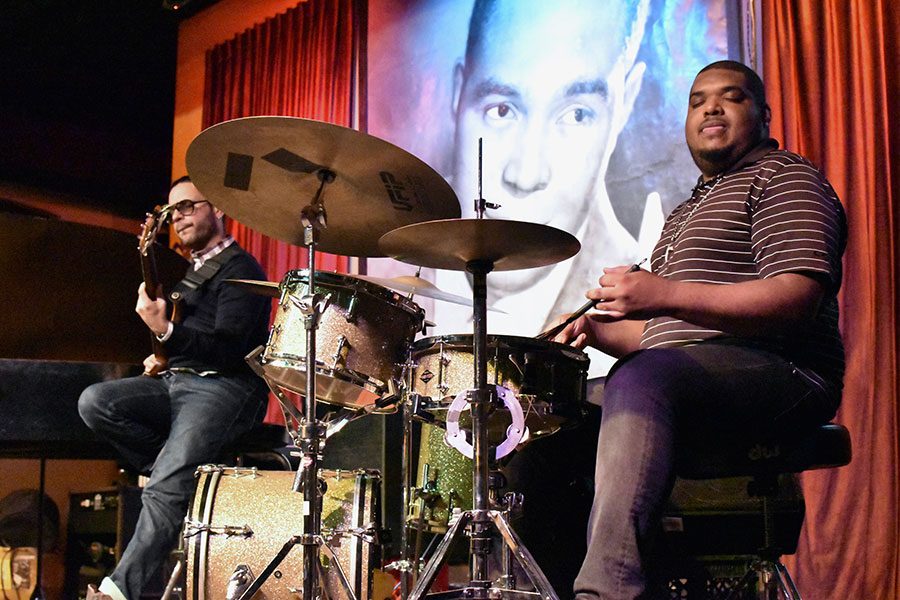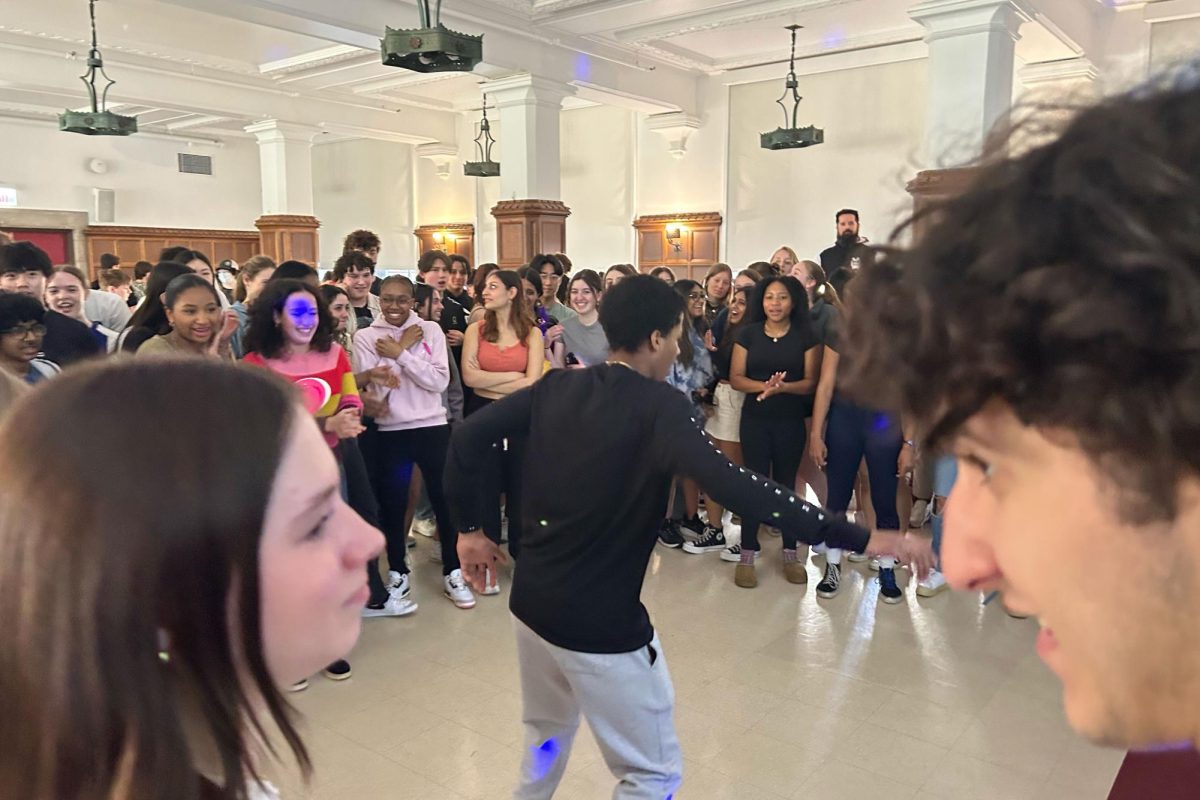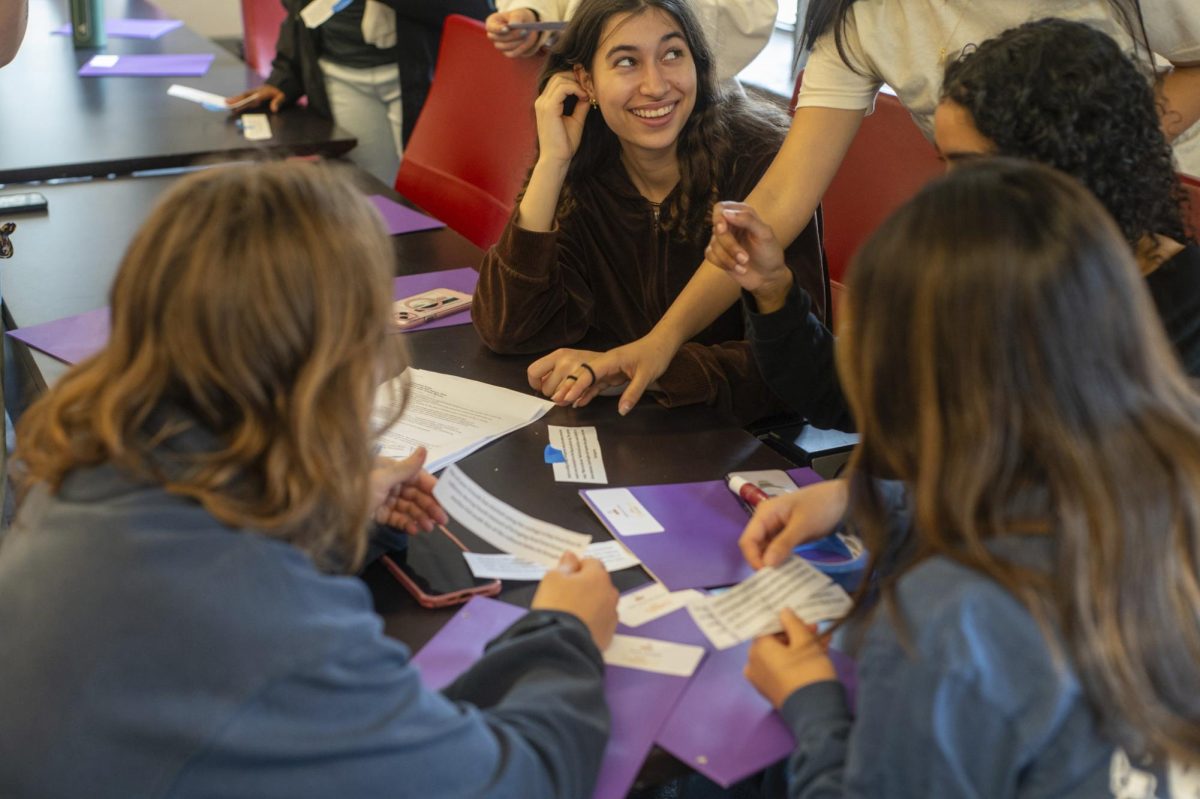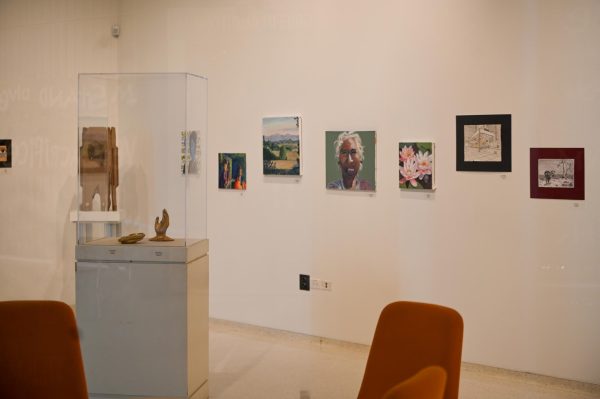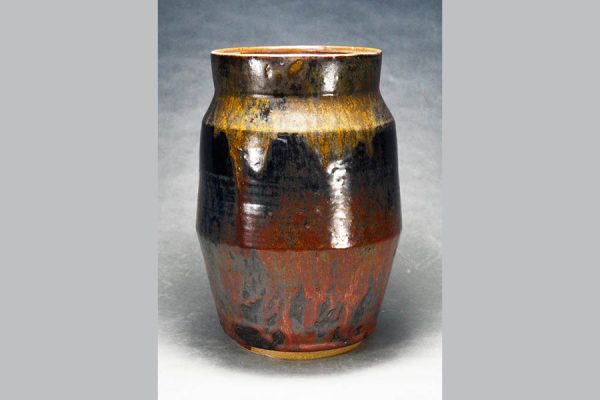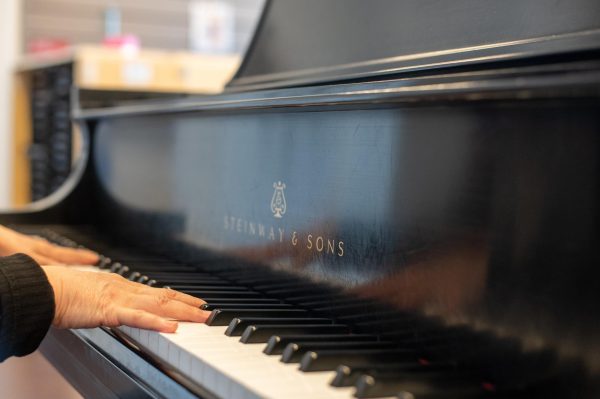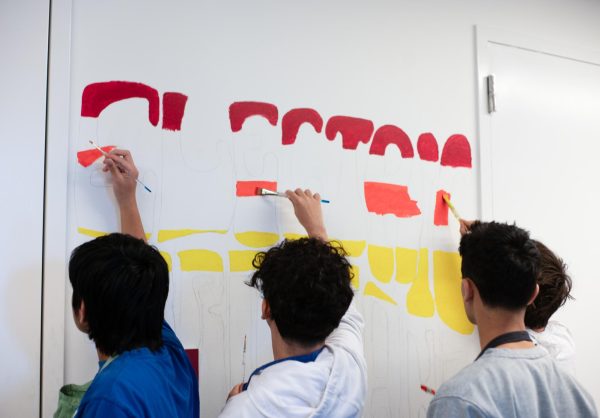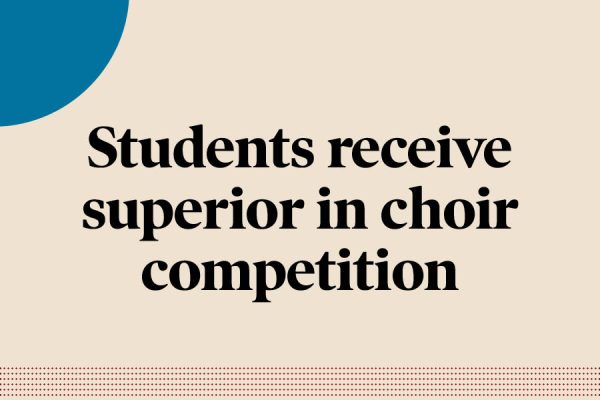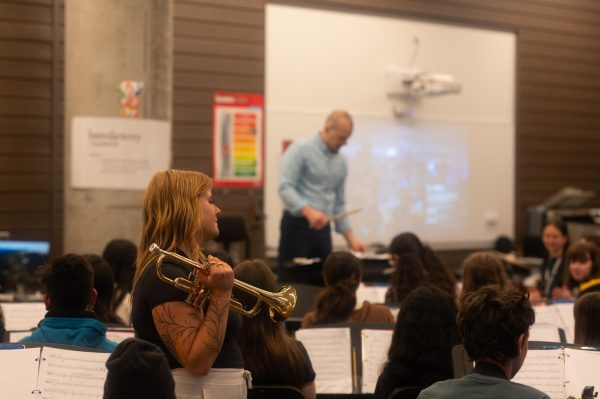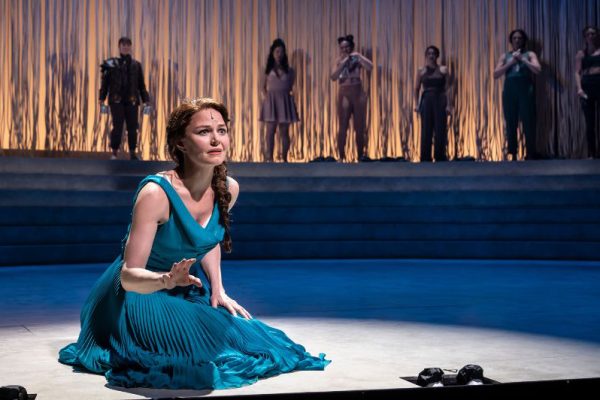All That Chicago Jazz
April 19, 2018
The sound of a snare drum rattles through the room. An E flat chord is struck and the crowd hushes. Hands grace the ivory keys of a piano with a high, lilting arpeggio. When listening to Ahmad Jamal’s “Moonlight in Vermont,” a classic Chicago jazz piece, one is immediately drawn into the room.
This is the epitome of Chicago’s jazz culture: intimate and emotional.
Arriving from New Orleans in the 1920s, jazz became an integral part of Chicago culture as the city grew and prospered.
“I think as a result of that, the identity of the style of a jazz had a very New Orleans flavor to it,” U-High jazz instructor Francisco Dean said. “Some of the big pioneers were ‘Jelly Roll’ Morton, Sidney Bechet, Louis Armstrong. Those are musicians that are very well known for being in the heart of New Orleans but really flourished in Chicago.”
In jazz clubs, musicians could develop their music while making a living. That, in addition to the nightlife atmosphere, is why jazz culture in Chicago was largely concentrated in clubs. In classic jazz clubs, including the Green Mill Cocktail Lounge in Uptown or Jazz Showcase in Printer’s Row, one can become immersed in the jazz music Chicago is famous for.
Walking into a jazz club in Chicago today, attendees would feel an immediate sense of intimacy. Low lighting and small tables, some right up close to the few musicians on the floor.
Mr. Dean described the way he experiences jazz clubs.
“I go into the club deciding where I want to sit because of the experience I want to get that night. If it’s a group I’m hearing for the first time, maybe I want to sit further back so that I can take in all of it,” he said. “If it’s a musician that I know really well that I’m a huge fan of, I kind of want to get up close because for me it’s being able to see a whole other dimension of that person’s playing.”
The beauty of jazz comes from its unique improvisational style.
“You’ll notice an interaction among them on stage that could easily take place if the hall was empty. There’s something about their understanding of that music and their interaction with each other because they spend so much time together that it’s like this inside thing that the audience wouldn’t even be able to relate to, but for them, they’re still entertained because it’s great music,” Mr. Dean said. “That energy from the crowd affects the performers, which in turn affects the listeners, so then it all becomes a very connected thing — everyone feeding off of everyone else’s energy.”
Outside the clubs, Chicago jazz culture involves jazz fests — the most popular of which are the Labor Day Jazz Fest and the Chicago Blues Festival, each featuring local and touring musicians. Aside from festivals, to get the best sense of local musicians, Mr. Dean suggested Room 43 on 43rd Street.
“I think that the Green Mill and the Showcase, they’re going to attract major artists that are on tour stopping through Chicago so it’s hit or miss,” he said. “Probably on an off night, like if you went during the week, you’d get a sense of Chicago people. But it’s hard to know who all of them are because they’re not marketed the same way that some of these bigger name New York people or LA or New Orleans people are.”
Chris Greene of the Chris Greene Quartet said of jazz in Chicago, “Chicago has something. Louis Armstrong could have taken his musical gift anywhere when he left New Orleans, but he chose to make his home here for a brief period. The great tenor saxophonist Sonny Rollins spent a considerable amount of time here after completing rehab.”
Mr. Greene went on to name several jazz titans who made their home in Chicago, pointing at Chicago as a true hub for jazz musicians.
“I think my all time favorite Chicago jazz record is Miles Davis’ ‘Live at the Plugged Nickel,’” Mr. Greene said about the recording at a popular Chicago jazz club. “The musicians in the band felt comfortable enough at that popular jazz club to stretch out and spontaneously reconfigure Davis’ repertoire of standards into something new and fresh.”
Chicago remains a hub of jazz today.
Mr. Greene said, “Like I mentioned before — Chicago has something.”



